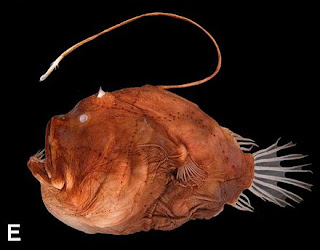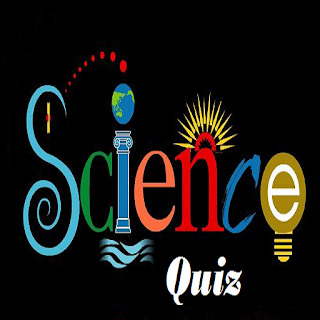BIOLUMINISCENCE: LIGHT THAT LIGHTS LIFE
BIOLUMINISCENCE:
LIGHT THAT LIGHTS LIFE
Nikunja Bihari
Sahu
If you happen to come across a Fire-fly flashing its light in a Summer night, you may be assuming it as a meaningless display. However, it is a signal to others to communicate an important message. The phenomenon, called Bioluminescence, is the production and emission of light by living organisms by Chemical reaction which is widely seen in nature. Animals often use the technique to hunt for preys, defend against predators, find mates, and execute other vital activities. Light produced in this way is a survival technique, and hence, means life to many animals around us!
PROTECTION AGAINST ENEMIES
Often animals use a strong flash of light to scare off an impending
predator. The bright signal can startle and distract the predator and
cause confusion about the location of its target. From small Copepods to the
larger Vampire Squids, this tactic can be very useful in the deep-sea. The
‘Green Bomber’ worm (Swima bombiviridis) and four other similar worm species from the polychaeta
family that live near the bottom
of the sea (the species discovered
recently in 2009) release a bioluminescent bomb from their body when
in danger.
Some marine species use a technique called ‘Counter-illumination’ to protect them. Many predators, such as Sharks, generally hunt from below. They look above, where the sunlight creates shadows of the prey in the water medium that guide them to reach the prey. Hatchet-fish use counter-illumination technique to evade from its predator. They have light-producing organs that point downward. They adjust the amount of light coming from their undersides to match the light coming from the above. By adjusting their bioluminescence glow, they disguise their shadows and become virtually invisible to the predators looking up.
Some bioluminescent animals, such as Brittle stars, can detach their body parts to distract predators. The predator follows the glowing arm (detached body part) of the Brittle star while the animal crawls away to safety in the dark. Brittle stars, like all Sea stars, can re-grow their lost limbs.
Some animals detach their body parts on other animals too as a means of protection. When threatened, some species of Sea Cucumber can break off the luminescent parts of their bodies to stick onto nearby fishes. The predator generally follows the glow on the fishes while the Sea Cucumber escapes quickly.
Biologists think that some species of Sharks and Whales may take advantage of bioluminescence phenomenon even though they are not bioluminescent themselves. A Sperm Whale, for instance, may seek out a habitat with large communities of bioluminescent plankton which are not part of the Whale's diet. As the planktons predators (fishes) approach the plankton, their glowing alerts the Whale. The Whale’ threatens and eats away the invading fishes. The plankton then turns off their lights.
Some insect larvae (like Glow worm, Millipedes) light up to warn predators that they are toxic. Toads, birds, and other predators evade the prey assuming that consuming the larvae is harmful for them that may lead to death.
FEEDING
Animals can use their lights to lure the prey towards their mouth or even to light up the nearby area where they could see their preys better. Sometimes the prey being lured can be small plankton, like those attracted to the bioluminescence glow around the beak of the Stauroteuthis octupus . But the light can also fool larger animals. Whales and Squids are attracted to the glowing underside of the Cookie-cutter Shark, which grabs a bite out of the animals once they are close.
Other fishes, such as a type of Dragon fish, also use bioluminescence for hunting and feeding. They are adapted to emit red light. As most fishes can see only blue light, the Dragon fish has an enormous advantage when they light up a surrounding area. That means, they only can see their prey, but their prey can't see them!
However, glowing animals typically
create light by a chemical reaction (called Luminescence) that produces light
energy within the organism’s body which is far more efficient than Incandescence.
It neither requires nor generates much heat, and hence, sometimes known as cold light.
Animals exhibiting Bioluminescence occur mostly in the open sea. These
include, fish , jellyfish, comb jellies, crustaceans, and cephalopod mollusks. Most marine light emission is in the blue and
green part of the spectrum However, some loose jawed fish emit red and infra-red light and the genus Tomopteris emits yellow light.
Among the micro-organisms, some species of Fungi and Bacteria also exhibit bioluminescence. The most frequently encountered
bioluminescent organisms may be the Dinoflagellates present in the surface layers of the
sea which are responsible for the sparkling phosphorescence of the seas
sometimes seen at night in disturbed waters. A different effect that needs
special mention is the thousands of square miles of the ocean surface which
shine with light produced by
bioluminescent bacteria commonly known as the Milky Seas Effect. This is sometimes visible from the
satellite.
Bioluminescent organisms are a target for many areas of research in the field of Biology and Medicine. Luciferase systems are widely used in Genetic engineering as reporter genes (each producing a different colour by fluorescence) and for biomedical research using bioluminescence imaging technique. For example, the firefly luciferase gene was used as early as 1986 for research using transgenic tobacco plants. Vibrio bacteria, in symbiosis with marine invertebrates such as the Hawaiian Bobtail Squid (Euprymna scolopes), are key experimental models for bioluminescence. Bioluminescent activated destruction is an emerging cancer treatment method which is under research.
The structures of the light
producing organs in bioluminescent organisms (called Photophores) are being investigated by industrial designers. Engineered bioluminescence could
perhaps one day be used to reduce the need for street lighting or for
decorative purposes. In this method, it may be possible to produce light that
is both bright enough and can be sustained for long periods at a workable
price. In an experiment, the gene that makes the tails of fireflies glow was added to mustard plants. The
plants glow faintly for an hour when touched, but a sensitive camera is needed
to see the glow. University of Wisconsin-Madison is researching the use of genetically engineered bioluminescent E.coli bacteria, for use as a light bulb. Research is also under way to create
bioluminescent plants!
Because Luciferin is consumed in the
light-producing reaction, the reaction cannot be sustained for a long period of
time. A team from Cambridge is working in this area to develop a genetic
biotechnology part that codes for a luciferin regenerating enzyme from the
North American firefly that would help to strengthen and sustain the light
output.
Education
Officer
Regional Science Centre
Bhopal Phone :8018708858








Good afternoon sir Biolumnisence can be very good PPT presentation..
ReplyDelete